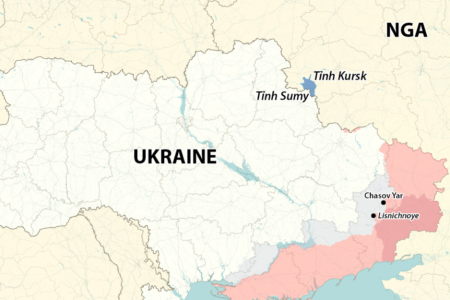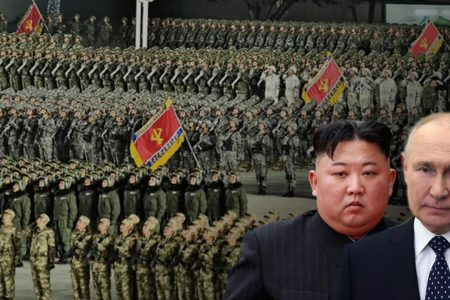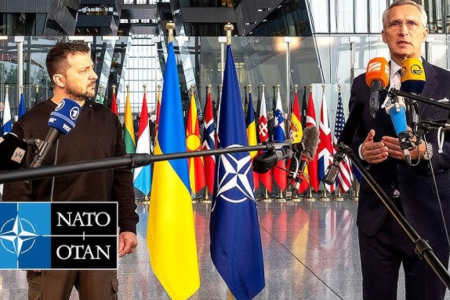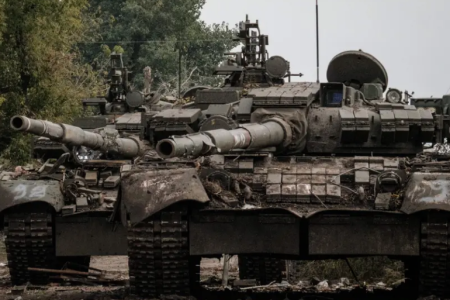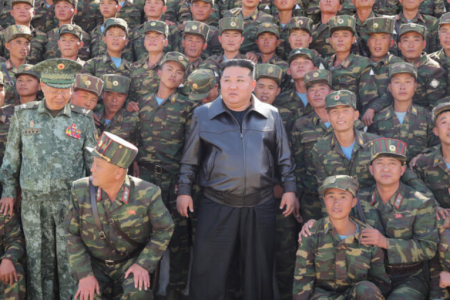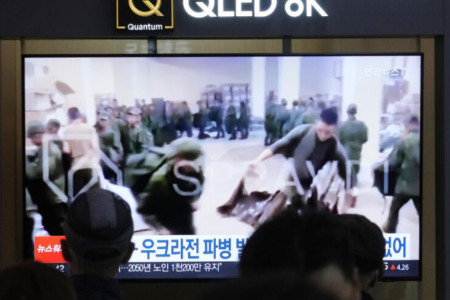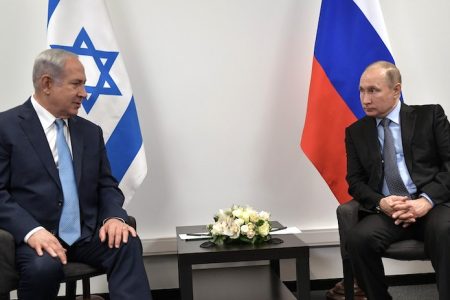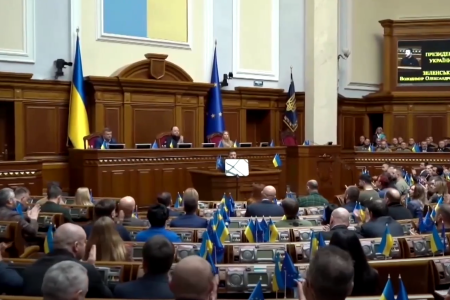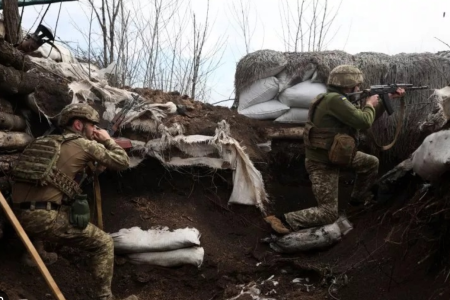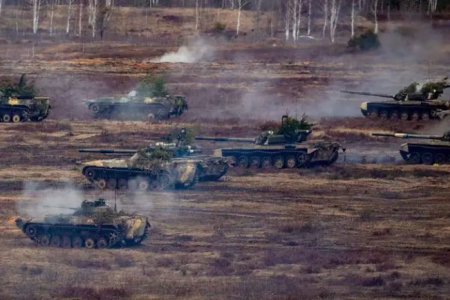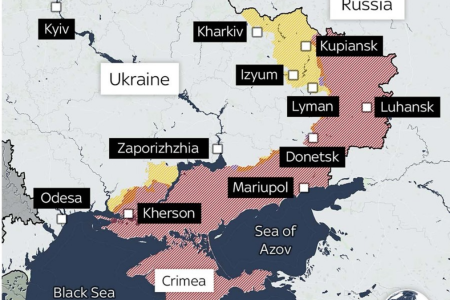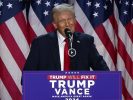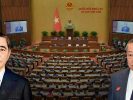
Vietnam changes its direction from China to the US
The relationship between Vietnam and China seems to be cooling down. Last October, Chinese Foreign Minister Vuong Nghi visited four ASEAN countries, and in January this year, Mr. Vuong Nghi visited four other ASEAN countries, except Singapore and Vietnam.
Earlier this April, China also invited foreign ministers of four ASEAN countries to hold talks in Beijing. Specifically, there are Singapore Foreign Minister Vivian Balakrishnan, Malaysian Foreign Minister Hishammuddin Hussein, Indonesian Foreign Minister Retno Marsudi, and Philippine Foreign Minister Teddy Locsin. In all these meetings China did not mention Vietnam. Contrary to this Chinese coldness is the warmth in US-Vietnam relations. Vietnam and Singapore were two cases specifically mentioned in the Biden administration’s Temporary National Security Strategy Guide released in March.
However, Vietnam-US relations still have many obstacles. One of the obstacles is the trade deficit between Hanoi and Washington.
Former US Ambassador to Hanoi Ted Osius said that former President Trump was often “haunted by the problem of the trade deficit.” This is one of the only three issues that Mr. Trump raised during the 2017 reception of Vietnamese Prime Minister Nguyen Xuan Phuc at the White House where Mr. Osius was one of those present.
In 2019, Mr. Trump again revealed his obsession when claiming that “Vietnam used us even worse than China.” It is therefore not surprising that just a month before leaving office, Trump labeled Vietnam a “currency manipulator” while there are many rumors that he will impose tariffs on goods exported from Vietnam to the US. These moves threaten to undermine the relationship between the US and Vietnam, which is seen as key to Washington’s Indo-Pacific strategy to counter China’s dominance in Southeast Asia.
Then, on January 15, the Office of the US Trade Representative (USTR) announced that the agency was not recommending a tax on Vietnam, even though it declared Hanoi’s actions “unreasonable.” This decision has helped both Vietnam and President Joe Biden (who is in a good position to be able to deepen the relationship between the US and Vietnam) avoid a “bullet.”
The threat is China
Unlike many countries in the world, Vietnam has had a very successful 2020 year: controlling the COVID-19 pandemic, successfully demonstrating the role of the ASEAN President, and presiding over the signing ceremony of the Regional Comprehensive Economic Partnership (RCEP). Vietnam’s economy even recorded a growth rate of 2.91% in 2020.
However, not all are positive for Vietnam. There has been a series of developments that suggest that the Sino-Vietnamese relationship is still very difficult and could possibly get worse. Most Vietnamese see the resistance against Chinese expansion as just a continuation of the conflict that has lasted for thousands of years. The Vietnamese cautiousness towards Beijing is now also reflected in more normal concerns: the “toxic” nature of Chinese goods and the exploitative nature of Chinese enterprises.
China’s hydroelectric dams on the Mekong, coupled with the impact of climate change, have robbed the river of abundance and in 2016 left Vietnam suffering its worst drought in 90 years. In 2019, China’s construction of dams pushed saltwater into the Mekong River, causing damage to Vietnam’s rice cultivation. Vietnam is also very concerned when looking to Cambodia, its once friendly neighbor. China’s over-encroachment in the South China Sea, the Mekong River, and Cambodia threaten to push up Vietnamese anti-China sentiment so much that Hanoi will have no choice but to move closer to Washington – where the majority of Vietnamese who hold a positive view towards the US will support them.
Hanoi seems to realize many problems. Washington and Hanoi were indeed strategic partners in all aspects, but Vietnam could play a larger role in US foreign policy by receiving more port visits by US Navy ships and accepting more US defense aid packages.
Suggestions for US government policy
The Vietnamese story shows a “pivot” or a policy shift from China to the US in Southeast Asia, of which Vietnam is a case in point, even though Vietnam is a close neighbor of China and the same communist regime as China.
The recent Whitsun Reef incident reminds the world of China’s ambitions for Southeast Asia. Currently, many Southeast Asian countries, including Vietnam, are “jolted” between choosing which side, Beijing or Washington for their future. The US has many advantages, especially the US security umbrella, along with the fact that Southeast Asia is not worried about the territorial invasion from the US, but the most priority issue of Southeast Asian countries is always economic development, it is because this that Southeast Asian countries always have to “look to China” even though China’s territorial ambitions worry Southeast Asian nations.
Many experts have recommended to the US administration to increase its military presence in the South China Sea to counterbalance and curb China’s aggressive behavior. But it is also this measure that puts the risk of a US-China military clash in the South China Sea. So, another and more effective measure to create tension and military confrontation between the parties, is that the US government can take economic measures.
To be able to balance geopolitics in the South China Sea, the Biden government needs to use economic tools and adopt a three-pronged approach.
First, the US needs to offer alternatives to China’s “predatory” financial and expensive infrastructure projects under the “Belt and Road” initiative by partnering with other countries in the “Quartet” group. The Biden administration needs to utilize the newly established International Development Finance Organization and multilateral donor organizations such as the Asian Development Bank and the International Financial Institution to finance infrastructure development projects in Southeast Asia. By adopting the model used to make the COVID-19 vaccine for Southeast Asia, where the US shares the technology and Japan will fund it, the US can reduce the costs of its treasury.
Second, the executive order signed by Biden to review the supply chain needs to extend the priority of moving factories out of China and to countries in Southeast Asia such as Vietnam, Thailand, and the Philippines. The Vietnamese and Thai economies have successfully capitalized on the US-China trade war and quickly embraced factories and industries displaced from China as these companies sought to avoid tariffs. Vietnam, Thailand, and other countries in the region can take over new supply chains.
Third, the Biden administration needs to rejoin the Comprehensive and Progressive Agreement for Trans-Pacific Partnership (CPTPP). CPTPP has introduced the US into the Asian trade structure. Without the US in the CPTPP and with the ratification of the China-led RCEP, China’s regional hegemony will be strengthened and America’s role in the area dropped to the lowest level. Furthermore, if the US market is part of the CPTPP, Southeast Asian economies will double their gross domestic product, with a growth of over 10% like Vietnam.
In the future, economic instruments such as aid, supply chains, trade agreements, and other “carrots” for Southeast Asia will be a more effective, long-term solution to the South China Sea dispute than military confrontation.
Thoibao.de (Translated)



